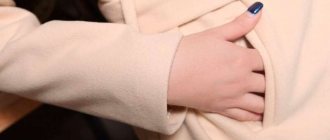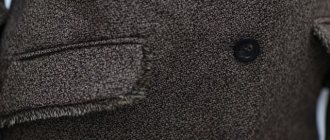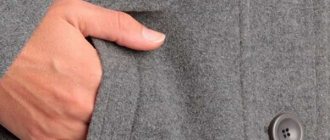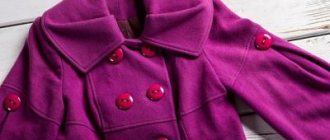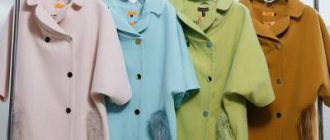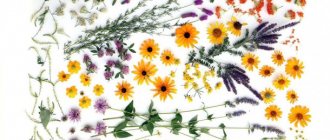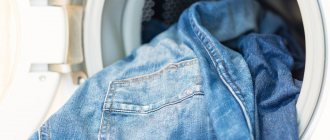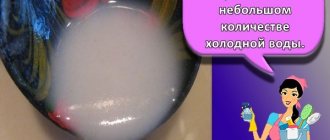Fashion and modern technology have made the coat a design item. A huge selection of artificial and natural materials from which this wardrobe item is sewn requires careful attention to the care of the product. If previously only drape fabric was used for tailoring, now the market offers models made of cashmere, leather, suede, velor, without, of course, leaving aside the classics of the genre. Any of these fabrics require specialized knowledge on how to iron a coat.
How to remove wrinkles and creases using an iron
Storing a coat for a long time without using it, especially if it hangs in a tightly packed closet, leads to the appearance of bruises, folds, and creases. In this form, the product loses its attractive appearance, and ironing becomes necessary. Before starting the process, you need to carefully study the information on how to properly iron a coat, located on the label, where the permissible temperature must be indicated. Some models are best dry cleaned.
Features of ironing at home
Is it actually possible to iron a coat? Some materials cannot be ironed in principle, but you can get rid of wrinkles at home. Suede is steamed in a vertical position - if there is no steam generator, you can do this with an iron, many of them are equipped with a “Steam boost” function. A leather coat will have to be steamed. It will take its original form if you place it in a bathroom filled with steam - after a while its surface will become smooth, all you have to do is dry it.
The quick method is not always reliable - you can iron corduroy, but only on the wrong side and on a soft surface, so as not to wrinkle the pile. The same principle applies to velor and velvet fabrics. If you run the iron along the front side, the pile will be smoothed out, and it is no longer possible to return it to its original form - the product will be hopelessly damaged. Synthetic fabrics can simply melt from hot temperatures.
Smoothing with a steamer
You can avoid the appearance of scorch marks on clothes by using a steam generator or an iron with a steam function. If you find a sign on the tag that prohibits ironing, try gently steaming the coat.
Hang the item on hangers on the drying rack and go over the entire surface. Try not to stay in one area for too long and keep your hands away from the hot steam. As after normal ironing, allow the coat to cool and dry in a ventilated area.
How to iron coats made from different types of fabric
As already mentioned, before you begin the actual ironing process, you need to familiarize yourself with the care recommendations. We are not talking about summer types of coats made of cotton fabrics. Everything is clear with them; they are stroked using standard methods. As for more serious options, for example, how to properly iron a warm coat at home, each type of textile has its own method. The use of ironing fabric is desirable in all cases, except for vertical steaming or ironing from the inside out through the lining. For ironing, you can use gauze, special fabric (sold in the same place where irons are sold), or an iron soleplate that does not leave lasses.
Note! The sleeves of any coat can only be ironed using a sleeve holder. If one is not available, a tightly rolled towel will replace it. Otherwise, the appearance of arrows is inevitable, which is completely unacceptable for a coat.
Coat made of drape or wool
Natural wool and drape are not only difficult to iron, they are also expensive, which is also a good incentive for careful treatment:
- If for some reason you have to iron without ironing, you need to stock up on a set of paper napkins to clean the soleplate of the iron, eliminating, if possible, the appearance of scorch marks.
- Such fabrics, due to their thickness, structure and properties, are difficult to iron, so the product must be slightly moistened.
- Ironing begins from the inside out, if the coat is single-layer, without lining, this will be enough, with the exception of the finishing of decorative elements (epaulets, cuffs, lapels, pockets, flaps), the inside of the pockets is turned inside out and ironed
- You need to iron the seams especially carefully using the steaming method.
- Woolen fabric may require processing on the front side, where the use of protection in the form of an iron is mandatory.
Important! During the ironing process, the iron should only be moved in one direction. If the wool or drape has a long pile, the correct care is to treat the surface with hot steam at a short distance.
Suede and corduroy product
Both options can be artificial or natural; the former react poorly to high temperatures. The problem of how to iron a coat made of such materials has a simple solution. It is best to use steaming in a vertical position. If ironing cannot be avoided, the coat is turned inside out and laid out on a softened surface - this will help avoid unsightly wrinkles in the pile.
Synthetic product
Synthetics melt very easily, so ironing should only be done at the low temperature indicated on the product label. If the tag has not been preserved, you can use the tip of the iron to try the fabric from the wrong side, where the lace or mark will not be noticeable. The use of an iron-on or oversole is also mandatory.
We recommend:
Which steamer to choose for ironing curtains
Coat made of combined materials
In this case, the ironing process is divided into several stages. Each stage requires an appropriate approach, taking into account the characteristics of all types of textiles used in a particular model. The product, with or without filler, is turned inside out and ironed, then the front side is processed. Usually ironed in this order: back, front, sleeves, then decorative details made of contrasting fabric.
Attention! Sometimes it is recommended to treat the lining fabric last. The advice is fundamentally wrong - in this way, creases and folds reappear on the front side, which are much more difficult to straighten after ironing. Sometimes it is completely impossible to straighten them - no matter how you iron them, the crease lines will be visible in bright light.
Getting ready for work
Important point: before you start ironing, make sure your iron is fully warmed up. Many, without waiting for this, get to work and, not seeing the effect of their actions, increase the temperature. Such impatience leads to damage to clothes.
Try a hot iron first on an inconspicuous area - this way you will make sure that nothing threatens your cashmere.
To iron a coat easily and efficiently, you need:
- ironing board with a stand for sleeves;
- a small pad or roll of towel for the shoulder areas;
- wet gauze.
Before ironing, the item is additionally generously sprayed with distilled water - this measure will ensure maximum evenness of the fabric.
If the fabric has a pile, then you will have to move the iron in the direction of its inclination.
How to iron a coat without an iron
The absence of an iron does not mean that the problem of how to properly steam a coat made of certain types of materials (suede, leather, velvet or velor) has no solution. Is it possible to steam such a coat? It can almost always be refreshed and smoothed by hanging it in the bathroom filled with steam. After vertical steaming, the product should dry well. Only when dry can it be placed back into the wardrobe.
Setting the iron mode
Having determined the composition of the fabric by the coat label or by touch, select the appropriate iron setting:
- Woolen and wool-blend items made from drape, cashmere, felt, bouclé are ironed at temperatures up to 160 °C, which corresponds to the “wool” mode, indicated by two dots.
- Coats made of artificial polyester and nylon are steamed at the “minimum” level - one point.
- Outerwear sometimes contains silk, which adds shine to the surface of the fabric. It is also better to iron such things on a single machine.
- A wool coat may contain synthetic and silk fibers. When turning on the iron mode, take into account the properties of all textile components. Before processing the main fabric, test the heating temperature of the sole of the device on an inconspicuous area of the hem.
Tips for fixing small problems
Using simple techniques and small tricks, you can easily preserve the beauty of the product. The most correct method is the prevention of future problems, and the correct elimination of existing ones:
- Long-term storage of a coat implies its free presence in the wardrobe - placing it in a tightly packed closet is not the best option; it is better to find another place for it in the house.
- An effective method for eliminating “wrinkled” seams is ironing with an assistant. The collar or lapel is stretched and ironed through a damp cloth.
- If the fabric has stretched in some place, the method of “planting” the fabric is used. You can find out how to iron a coat in this case on special tailoring websites.
You can almost always return your coat to an attractive appearance on your own without overpaying for dry cleaning services. You just need to carefully follow the manufacturer's recommendations.
Care instructions
- When washing coats by hand, it is not recommended to rub the fabric against each other. It is enough to carefully turn over and compress the product, after placing it in a special bag for washing. With this approach, the likelihood of unnecessary folds will be significantly reduced;
- At the end of the washing process, there is no need to twist or wring out the material. It is enough to hang it over a basin or bathtub to drain off excess moisture;
- When washing, it is recommended to use special fabric softeners. This will add freshness, softness and reduce the risk of unnecessary wrinkles;
- It is recommended to iron a wool coat when it is not completely dry (there are exceptions, so you should carefully read the instructions on the tag).
In order for the item to remain neat and new in appearance longer, you must strictly follow the listed rules.
If you have any doubts about the idea of washing and ironing your coat yourself, you can take it to the dry cleaner and entrust the job to professionals. Specialists will return the original appearance to any type of fabric. What to wear with a black jacket What to wear with a red coat
Ironing Features
Wool
Before ironing a coat made from 100% wool, you must read the product care instructions. This information can be found on the label. The ironing process consists of several stages.
- The first heat level is selected on the iron.
- Before ironing the coat, you need to cover the product with gauze, now you can iron it without fear for the wool, it will not be damaged. The temperature regime can be increased only if the folds are not smoothed out.
- The outer part is ironed only through damp gauze, and the reverse side can be ironed without it, directly.
You need to start from the wrong side, and then move on to the outside.
- All wrinkled areas are straightened with your hands before ironing.
- To iron sleeves, it is better to use a special stand, which is available in almost every ironing board model.
- After this, you can move on to ironing the coat from the back, collar and lapels. When smoothing the hangers, place a small hard pillow for convenience. The English collar must be ironed repeatedly to fix its position.
- At the end, the seams are ironed, this should be done with the tip of the iron.
If you decide to iron your coat after washing, know: in order not to spoil the item, you should only iron completely dry clothes. In addition to ironing, wrinkled folds on a coat can be removed using a steamer or using an iron with this function.
By the way, it is better not to iron a woolen coat, but rather to steam it, so as not to scorch the natural fibers. The appearance of the coat can be spoiled by scorch marks and shiny pieces that appear after ironing. Under no circumstances should you iron a dirty coat. After treatment, particles of dirt become strongly ingrained and it will be difficult to correct this.
Now let's look at two ways that will help bring a wool coat into proper shape without the use of special tools.
- The coat is laid out on the table surface, folded folds are straightened, and overly wrinkled areas are covered with a damp cloth, for example, terry cloth. So the product should lie for 8 hours. Then you can hang it on a hanger.
- In the bathroom, they turn on hot water and close the door tightly, artificially creating the effect of a steam room. When steam completely fills the room, you can hang up your coat. This should be done over hot water, keeping a gap of at least 25 cm. The product is left in this position for up to 4 hours (creases can be smoothed out even earlier). After obtaining the desired result, the coat can be hung in the living room and allowed to dry.
Cashmere
Cashmere products require special care. The methods described above for smoothing a woolen coat, of course, can also be used, but cashmere items still need to be ironed with special care. The material is quite capricious, so it requires careful care.
There are coat models that cannot be ironed at all; only steaming will help. It is best to steam a coat while it is hanging on a hanger. The temperature on the steamer or iron is set to minimum.
Synthetics
Polyester items cannot withstand high temperatures. At the same time, a coat made of polyester is considered the most wear-resistant; it practically does not wrinkle. Wrinkles may form after improper drying. If this happens, don’t worry, the product can always be smoothed out by steaming or regular ironing.
The iron is set to “silk” mode. The coat is turned inside out and ironed. In this case, there is no need to specifically press the iron on the material.
After ironing, the clothes should hang for several hours at room temperature. There is no need to put your coat in the closet right away. To select the optimal temperature setting for smoothing out a wrinkled coat, before processing the base material, you need to run the iron over a separate patch that is located on the lining.
Combined materials
Steaming or ironing a product made from a combined material can be done in several stages. First of all, iron the main fabric, then move on to the remaining details: sleeves, collar, patch pockets and other decorative elements. The coat lining is ironed last.
Using a steam iron
Processing products with a steam iron provides many advantages:
- delicate processing of clothing;
- prevents the appearance of scorch marks;
- You can iron even the thinnest fabric;
- steam will be distributed evenly.
A significant disadvantage of a steam iron is that this device is too large and takes up a lot of space in the room, since the design consists of a body and a large water tank. In this tank, the liquid is heated, which forms steam that is supplied to the iron. By the way, the cost of this device is also considered a disadvantage.
